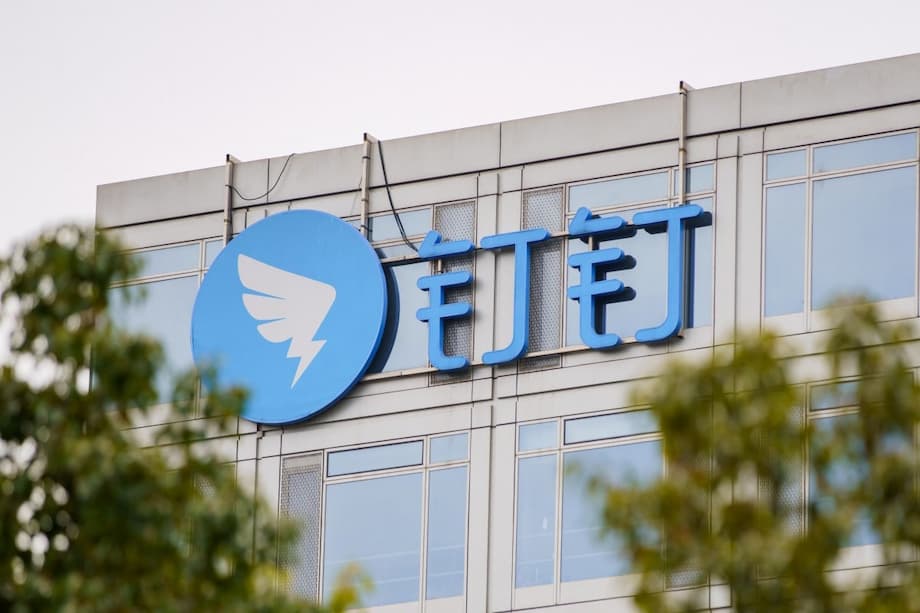A pocket AI assistant for meetings and more
Alibaba’s workplace platform DingTalk has stepped into hardware with the A1, a recorder about the size of a credit card that is designed to capture, transcribe, translate, and summarize speech with help from large AI models. The device debuted at DingTalk’s 10th anniversary event and sold its first 1,000 units immediately, signaling interest in compact tools that can turn conversations into actionable notes. Two versions are available in China at 499 yuan and 799 yuan, pricing that undercuts rivals such as Plaud Note Pro from a United States start-up and Mobvoi’s TicNote. The A1 links directly to the DingTalk app and its new AI Note system, so the audio becomes ready-made minutes, bullet points, and structured insights that can be shared across teams.
- A pocket AI assistant for meetings and more
- What the device can do
- Hardware at a glance
- Languages and the AI models behind the recorder
- Pricing, models, and early sales
- How it fits into DingTalk 8.0 and enterprise workflows
- Competing products and why the market is heating up
- Practical considerations and limits
- Who stands to benefit
- Highlights
The pitch is simple. Press record, walk into a meeting, class, interview, or clinic appointment, and walk out with clean text, a summary, and the next steps. DingTalk says the A1’s transcription engine was trained with more than 100 million hours of audio. It supports more than 100 languages, 30 Chinese dialects, and domain terminology across some 200 industries. That multilingual reach turns the device into a compact translator as well as a note taker. Early emphasis is on office workers, but DingTalk is targeting sales teams, HR, teachers, doctors, lawyers, and customer support agents who spend hours processing conversations.
What the device can do
The A1 pairs with the DingTalk app to deliver several functions that usually require multiple tools. It records locally, transcribes speech into text, translates in real time, and then applies AI to summarize and organize the content. Within the DingTalk app you can generate meeting minutes, action items, and even mind maps. Templates help the system understand the scenario, such as a board meeting, an interview, a class lecture, a medical consultation, or a sales call. DingTalk says there are more than 30 scenario templates, so users can select one and get output suited to that context.
For on-the-go capture, the A1 can magnetically attach to the back of a smartphone for call recording and quick memos. During in-person conversations, the device supports on-screen captions in the DingTalk app. It can also project live translated text to a larger screen for group settings, turning a staff meeting or seminar into a live captioned session that is easier for multilingual teams to follow. After a session ends, the app can automatically produce summaries and organize customer or candidate information with tags that make follow-ups simpler.
Hardware at a glance
The A1 is shaped like a slim card, measuring about 3.8 millimeters thick and 40.8 grams in weight. Inside is a BES2800 6 nanometer AI audio chip from Hengxuan Technology, paired with a 660 mAh battery and 64 GB of local storage. DingTalk rates the device for up to 45 hours of continuous recording or about 60 days of standby. That combination allows extended work trips without charging and ample on-device storage for long sessions.
Microphone design is central to any recorder. The A1 flagship model uses six microphones, including a bone conduction microphone, to pick up voices within roughly 8 meters while suppressing environmental noise. DingTalk says the system can reduce more than 500 types of background noise, which helps in echoey conference rooms, busy classrooms, or open offices. The flagship version uses an aluminum alloy body and includes a small front display plus two physical buttons for quick control. A youth edition with a leather-like finish removes the front display for a simpler look and feel.
Security features address enterprise concerns. DingTalk says recordings are encrypted across device, app, and cloud. Companies can choose private deployment and centralized data management so recordings and transcripts stay within internal systems. That option matters for industries with strict confidentiality and compliance requirements.
Languages and the AI models behind the recorder
DingTalk built the A1’s transcription and translation around Alibaba’s Tongyi AI lab, which trained the system on more than 100 million hours of audio. The company says the model understands over 100 languages and 30 Chinese dialects, and it can handle terminology used in around 200 professional fields. The flagship edition supports up to 120 languages for translation according to product listings, while the entry model focuses on core languages for everyday use. Dialect support is useful in China’s diverse linguistic landscape, where meetings can mix Mandarin with regional speech patterns.
Audio processing goes beyond transcription. The device applies noise reduction, voiceprint recognition, and spatial pickup so it can identify speakers and attenuate distractions like air conditioners or keyboard clicks. That processing helps the AI produce cleaner transcripts, which in turn improves summaries and action items. If the model receives cleaner input, it can identify key points and tasks with fewer errors, especially in multi speaker meetings where people interrupt each other or speak at different volumes.
Pricing, models, and early sales
DingTalk is selling two versions. The flagship edition is priced at 799 yuan, with unlimited speech to text conversion, unlimited cloud storage, support for a wider set of languages, and unlimited AI generated analyses. The youth edition costs 499 yuan and ships with a streamlined feature plan, including 1,000 minutes of transcription per month and 10 GB of cloud storage, and support for three languages. Both versions include the same card style form factor and core recording functions, but the flagship adds the display, more microphones, and a premium build. The first batch of 1,000 flagship units sold out quickly on Tmall. DingTalk says open sales begin on September 15 through its official store.
How it fits into DingTalk 8.0 and enterprise workflows
The A1 arrives alongside DingTalk 8.0, a major update that reframes the platform as an AI driven productivity suite. At the center is DingTalk ONE, a personal AI secretary that filters messages, organizes schedules, handles approvals, and turns meetings into tasks. With A1, the capture side becomes simpler. You can record in the room or on the phone, then hand the audio to DingTalk ONE for downstream processing. Urgent items can be flagged automatically, and action lists appear in chats or team spaces without manual typing.
Beyond meetings, DingTalk’s AI Search helps users find information across documents, chats, and knowledge bases. AI Tables can generate spreadsheets, workflows, and dashboards from a chat style prompt. The A1 feeds content into that ecosystem, so meeting notes can become tasks in an approval workflow or entries in a project dashboard with minimal clicks. For IT teams, private deployment and centralized data controls align with common security models in large organizations and public sector agencies.
Competing products and why the market is heating up
Portable AI recorders are becoming a category of their own. Plaud, a US start-up, popularized the idea of a pocket recorder that rides along with your phone and handles the transcription and summarization. Plaud Note Pro sells at about 179 dollars. Mobvoi’s TicNote, launched in June, supports live transcription and translation for classrooms and offices and lists at about 159.99 dollars. DingTalk’s pricing starts lower, which reflects China’s manufacturing scale and a strategy to seed devices across corporate fleets and education networks.
The market backdrop is expanding quickly. Consultancy Runto estimates China’s AI hardware market, excluding AI phones and vehicles, will reach about 1.1 trillion yuan in 2025 and more than double by 2030 to around 2.5 trillion yuan. Penetration already runs high in some segments, with robot cleaners near 90 percent adoption of AI features and personal computers around 50 percent. Researchers at Runto point to policy support for AI in the public sector, the drive for tech self sufficiency, and rapid upgrades in traditional industries. That combination encourages companies to try dedicated devices like the A1 in parallel with software upgrades.
Cost structure also matters. Shenzhen and surrounding hubs manufacture a large share of the world’s electronics, which helps local firms package competitive AI features at accessible price points. With DingTalk, Alibaba can bundle device capabilities with a widely used enterprise app, lowering friction for corporate buyers who already manage identity, permissions, and data retention inside the same platform.
Practical considerations and limits
Real world performance depends on environment and expectations. Multi speaker meetings with cross talk can still trip up any model. Dialect recognition has improved with training, yet accents and jargon can produce errors that need quick edits. The A1’s six microphone array and noise control help in busy rooms, but recording quality still benefits from good placement on a table or lanyard rather than a pocket far from the speakers.
Battery life and storage are long enough for most office schedules, though power users will want to sync recordings to the cloud after long sessions. The youth edition’s monthly transcription allowance makes sense for budget buyers, while the flagship’s unlimited plan better suits heavy use in sales, recruiting, support, or journalism. Companies should set policies for consent and privacy. Call recording and in room recording are regulated in many regions, and team norms work best when everyone knows when the recorder is active and how the transcripts will be used. DingTalk’s encryption and private deployment options address corporate security, yet governance still requires internal rules about retention, access, and deletion.
Who stands to benefit
Sales representatives can record client calls, enter key points into a CRM through DingTalk integrations, and generate follow ups without typing. Recruiters and HR teams can use templates for interviews, which produce summaries of a candidate’s experience and communication style that can be reviewed by hiring managers. Teachers and students can turn lectures into notes with time stamps, then search within the transcript for study sessions. Doctors and administrators can capture consultations and produce summaries that help populate electronic records, subject to local regulations and hospital policies. Lawyers, journalists, consultants, and customer support staff can all convert talk into text that becomes documentation and action items in team spaces.
For small businesses, the lower priced model offers a cost effective way to bring AI note taking into daily operations. Larger organizations get the benefit of fleet deployment, centralized control, and the broader DingTalk 8.0 suite, where conversations feed schedules, approvals, and dashboards. The result is a single flow from spoken word to structured work, handled by hardware small enough to slip into a badge holder.
Highlights
- DingTalk A1 is a credit card sized AI recorder that captures, transcribes, translates, and summarizes speech.
- Two models launch in China at 499 yuan and 799 yuan, undercutting rivals such as Plaud Note Pro and Mobvoi TicNote.
- The transcription model was trained on more than 100 million hours of audio and supports over 100 languages and 30 Chinese dialects.
- Flagship edition adds an aluminum alloy body, a small display, six microphones including bone conduction, and unlimited AI services.
- Hardware specs include 3.8 mm thickness, 40.8 g weight, a 660 mAh battery rated for up to 45 hours of recording, and 64 GB storage.
- Security features include encryption across device, app, and cloud, plus enterprise options for private deployment and centralized management.
- The device integrates with the DingTalk app and AI Note system, feeding summaries, action items, mind maps, and searchable notes into team workflows.
- The first batch of 1,000 units sold out; open sales are slated for September 15 through the official store.
- China’s AI hardware market is projected by Runto to reach about 1.1 trillion yuan in 2025 and more than double by 2030.




